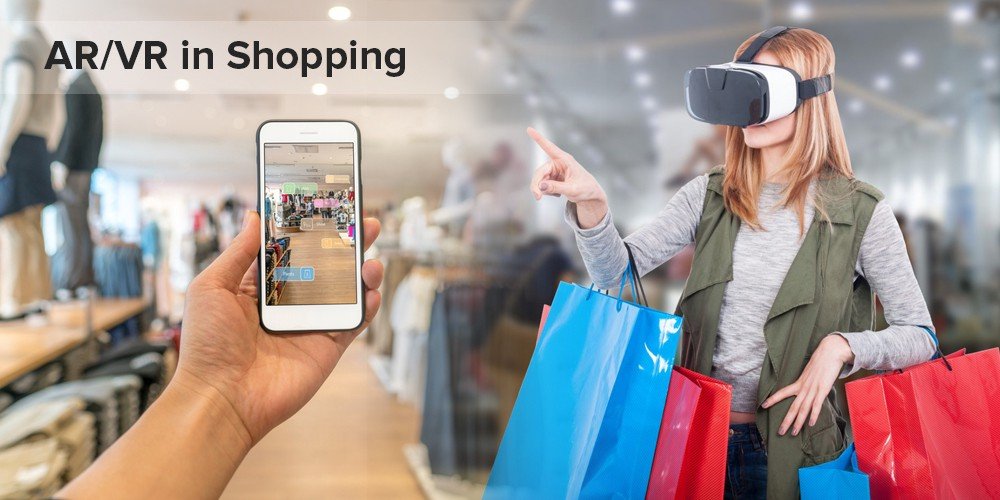Online shopping has become a significant part of the retail industry through the years and as internet access and global deliveries become more of a common occurrence, ecommerce gains a stronger foothold in the retail industry. In the last few years, the retail industry has kept on transforming itself to satisfy its online shoppers and this can only be the beginning (Clement, 2020).
Considering how online shopping brought more convenience for shoppers, we can further enhance the shopping experience by implementing 3D technologies such as Virtual Reality (VR) and Augmented Reality (AR). For those who are not familiar with VR and AR, VR brings its user in an immersive virtual world, it is basically a simulation. AR differs from VR as it brings digital elements into the real world by using your phone camera. Example of this is Pokémon Go, where you can catch a Pokémon on the street or at home. Another example is Snapchat, where you can put filters on your face or environment.
Have you ever bought products online, only to discover that the real product was not what you expected from the pictures online. Well, no more of those headaches as VR can change how you will shop online. By using VR gear, you can shop in a virtual world where you can check different products just like how you are shopping in a physical store. No more looking at mere pictures to help you decide on buying stuff. This would bring the retail industry to a whole other level as you can go online shopping that is almost like real life shopping (Bonetti, Warnaby & Quinn (2018). For those of you wondering how the VR experience would look like, I have included a Youtube video of Alibaba showing their VR shopping at the end of this article.
While VR brings you into a virtual world, AR aims to enhance your live view of the real world. Let’s say, you want to buy wardrobe for your bedroom, but you have limited space. Then you have to measure the space in your room and go shopping in different stores to find a wardrobe that fits your criteria. Seems like a lot of hassle, isn’t it? That is also no more as AR can simply aid you in this frustrating venture. Instead of looking at different furniture stores, you can use your phone to check if a wardrobe fits the space in your room by showing a virtual product that is accurate in its measurement. IKEA has already made an app using AR technology to help their customers check if a product fits a certain space. If you are curious about the IKEA app, you can find more information at the end of this article (Moorhouse, Dieck & Jung (2018).
Although it might take a while before we see a wide scale use of 3D technologies in the retail industry, major companies are already working on making this the next transformation of retail (Cook, Kusumoto, Ohri, Reynolds & Schwertzel (2020). So what do you think? Are you excited to experience this new type of shopping?
Interesting links:
Alibaba VR – https://www.youtube.com/watch?v=-HcKRBKlilg
IKEA AR – https://www.architectmagazine.com/technology/ikea-launches-augmented-reality-application_o
Bibliography
Bonetti, F., Warnaby, G., & Quinn, L. (2018). Augmented reality and virtual reality in physical and online retailing: A review, synthesis and research agenda. In Augmented reality and virtual reality (pp. 119-132). Springer, Cham.
Clement, J. (2020). E-commerce worldwide – Statistics & Facts. Retrieved from: https://www.statista.com/topics/871/online-shopping/
Cook, A.V., Kusumoto, L., Ohri, L., Reynolds, C., & Schwertzel, E. (2020). Augmented shopping: The quiet revolution. Retrieved from: https://www2.deloitte.com/xe/en/insights/topics/emerging-technologies/augmented-shopping-3d-technology-retail.html
Moorhouse, N., tom Dieck, M. C., & Jung, T. (2018). Technological innovations transforming the consumer retail experience: A review of literature. In Augmented reality and virtual reality (pp. 133-143). Springer, Cham.


Hi Kawah,
Interesting perspective on the future of retailing. I also used the IKEA AR application and it is indeed really convenient. I hope that more of AR/VR developments will unfold in the coming years. Yet, I do think that it will be complementary features, rather than a revolutionary change in the way we shop. Seeing how something fits (e.g. a sofa in a room or a new sweater) is one thing, but I believe that we combine more senses when we shop. For example, how something feels (e.g. a new sweater or the fabric from a sofa) or smells (e.g. scented candle). These are senses that are harder to digitize. However, as I said before, I am really excited for this type of shopping, but the other senses need to be digitized in order to fully revolutionize shopping as we know it. In addition, for a certain type of shopping, the Alibaba VR approach can really help. Especially, in these COVID-19 times when people want to minimize contact in stores.
Best,
Rik